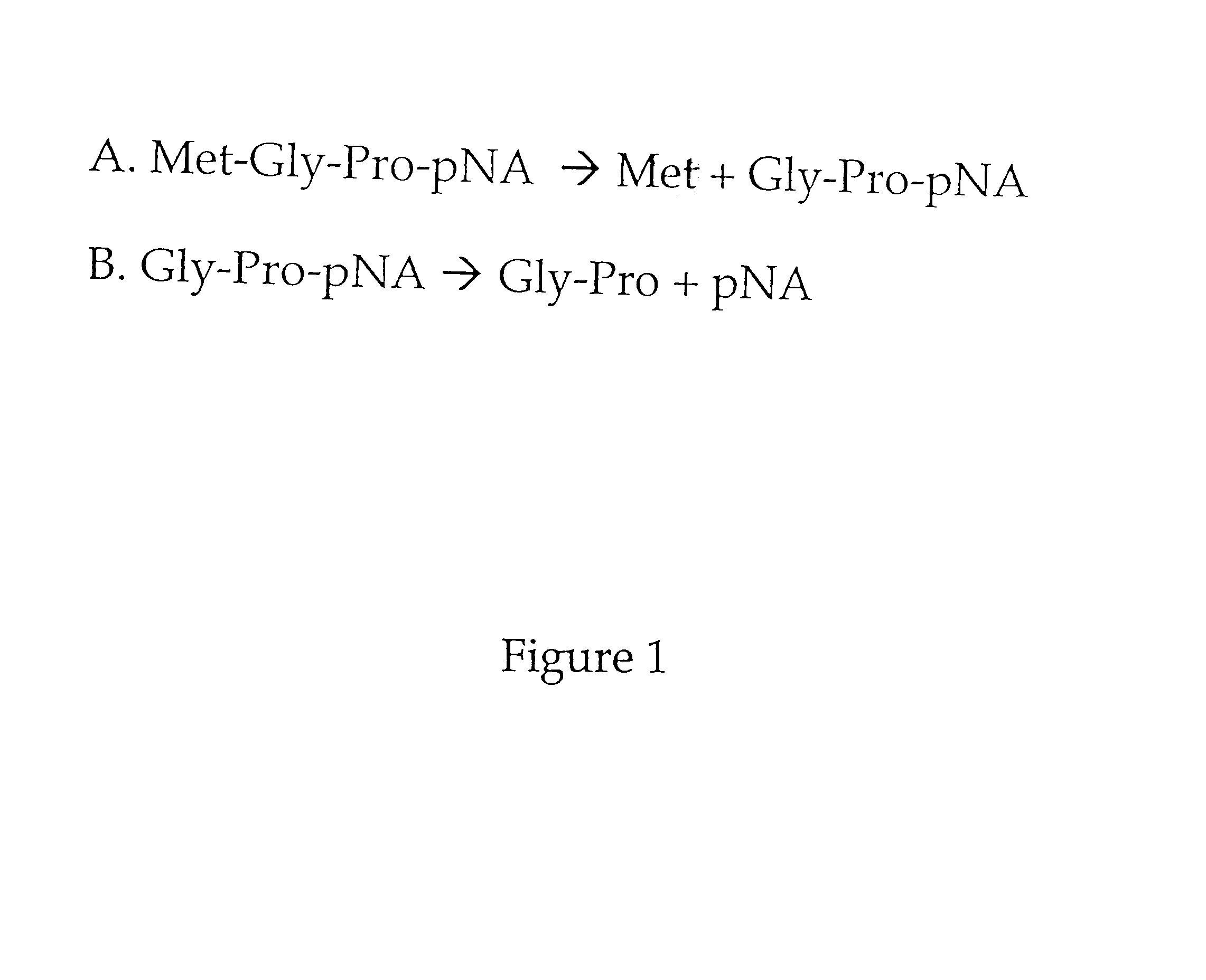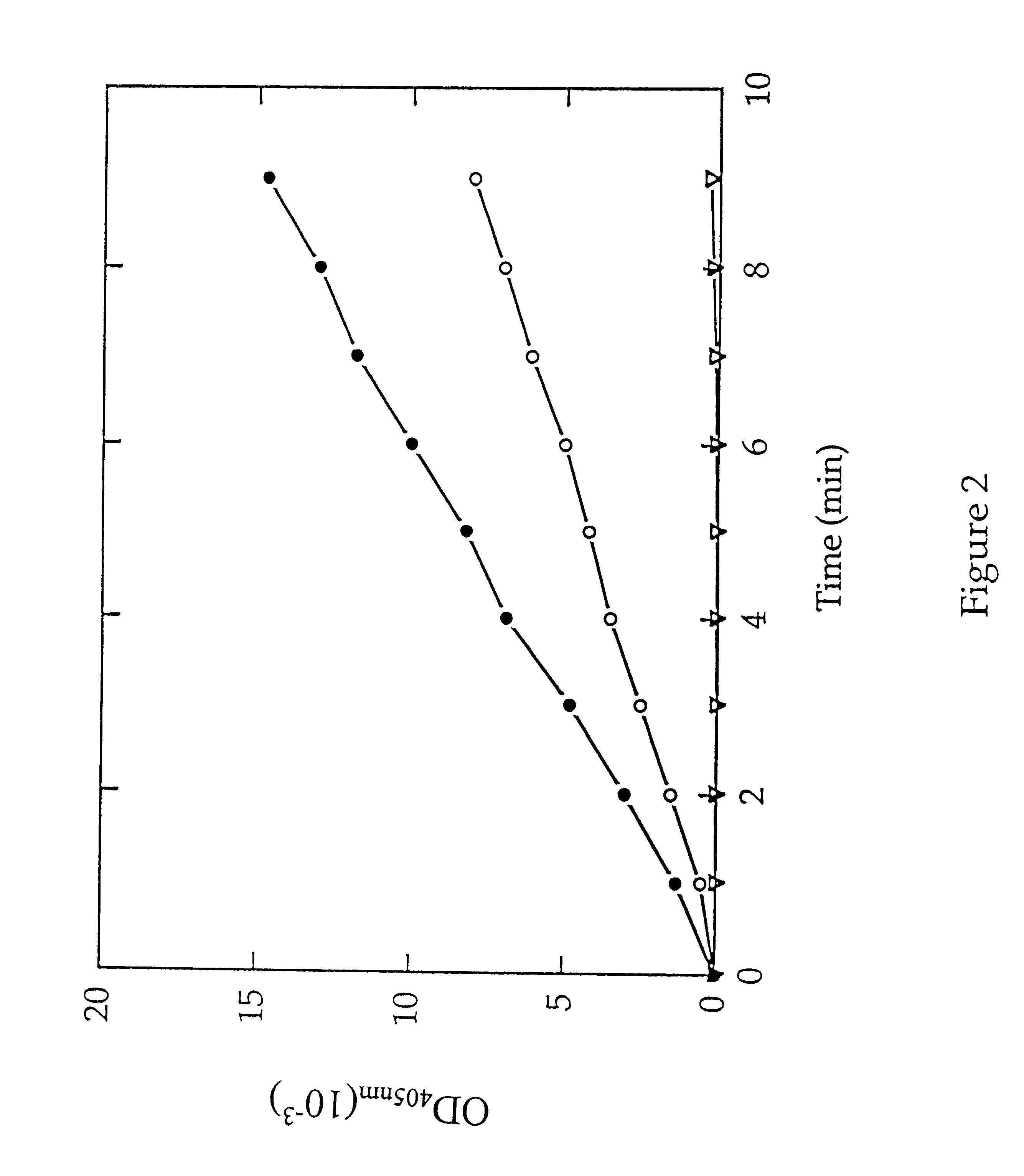Methods for identifying inhibitors of methionine aminopeptidases
a technology of methionine aminopeptidases and inhibitors, which is applied in the direction of peptides, chemical treatment enzyme inactivation, instruments, etc., can solve the problems of insufficient sensitive or accurate methods for quantitative assays, insufficient rapidity for high-throughput screening procedures, and insufficient detection accuracy
- Summary
- Abstract
- Description
- Claims
- Application Information
AI Technical Summary
Problems solved by technology
Method used
Image
Examples
Embodiment Construction
This example illustrates embodiments of the method for quantifying MAP and the method for detecting an inhibitor of MAP according to the invention.
To determine whether Met-Gly-Pro-p-nitroanilide is a substrate for MAP, and whether the presence of dipeptidyl peptidase could affect the activity of MAP, an AccQ-Tag assay was used as described in Zuo et al., supra. Table 1 shows that this peptide is a substrate for both type 1 and type 2 MAP.
The activity of both type 1 MAP and type 2 MAP was not affected by the addition of dipeptidyl peptidase IV.
MAP activity was next determined by monitoring the release of p-nitroanilide in a microtiter format. Purified type 1 MAP or type 2 MAP (0.6 .mu.g) and / or 0.001 unit of dipeptidyl peptidase IV was added in 47 .mu.l of buffer H (10 mM Hepes, pH 7.4, 10% glycerol), containing 0.1 M KCl and 0.1 mM of Co.sup.2+ in wells of a 96-well microtiter plate. After incubating at 37.degree. C. for 5 min, 2 mM of Met-Gly-Pro-p-nitroanilide was added to the mix...
PUM
 Login to View More
Login to View More Abstract
Description
Claims
Application Information
 Login to View More
Login to View More - R&D
- Intellectual Property
- Life Sciences
- Materials
- Tech Scout
- Unparalleled Data Quality
- Higher Quality Content
- 60% Fewer Hallucinations
Browse by: Latest US Patents, China's latest patents, Technical Efficacy Thesaurus, Application Domain, Technology Topic, Popular Technical Reports.
© 2025 PatSnap. All rights reserved.Legal|Privacy policy|Modern Slavery Act Transparency Statement|Sitemap|About US| Contact US: help@patsnap.com



